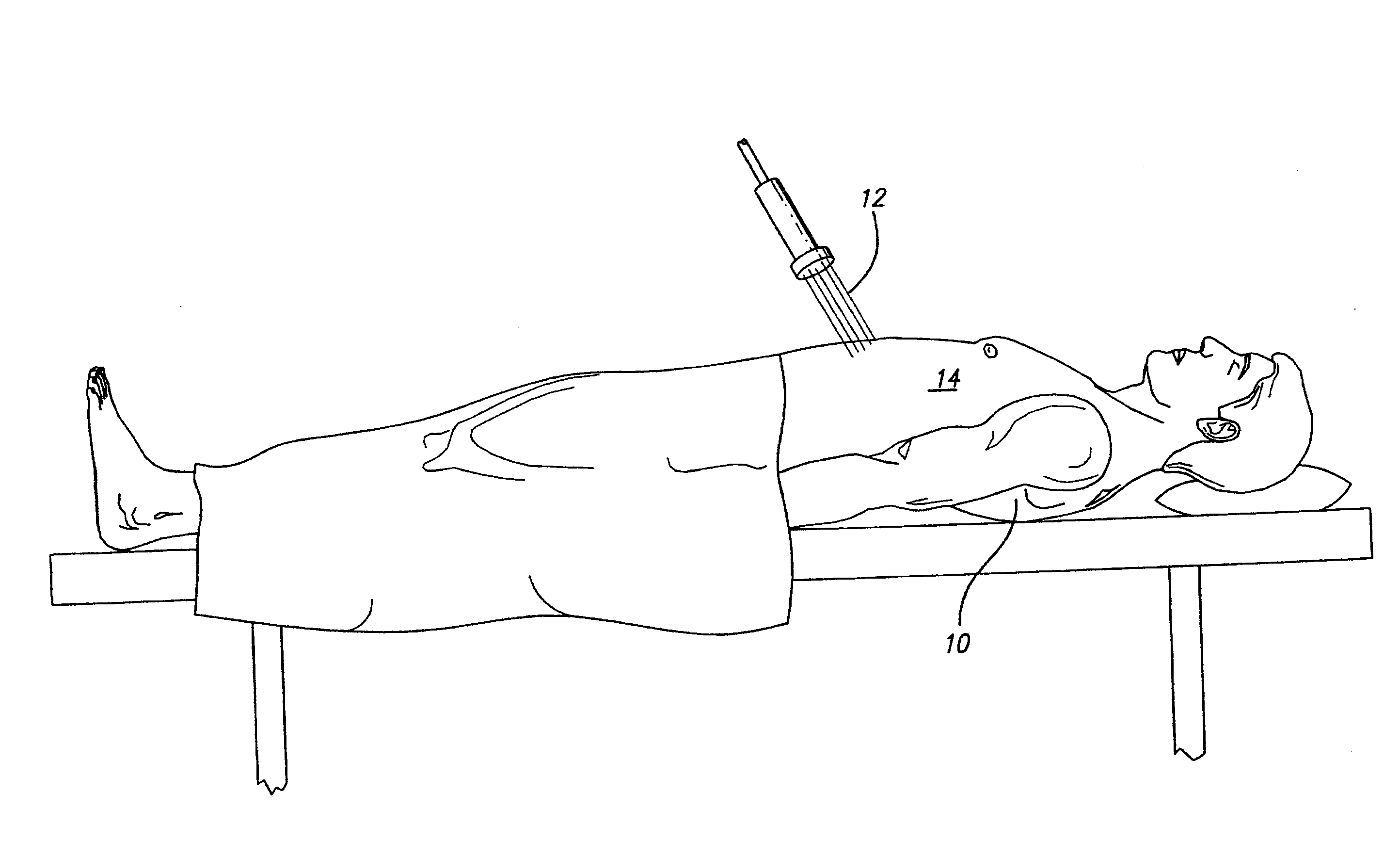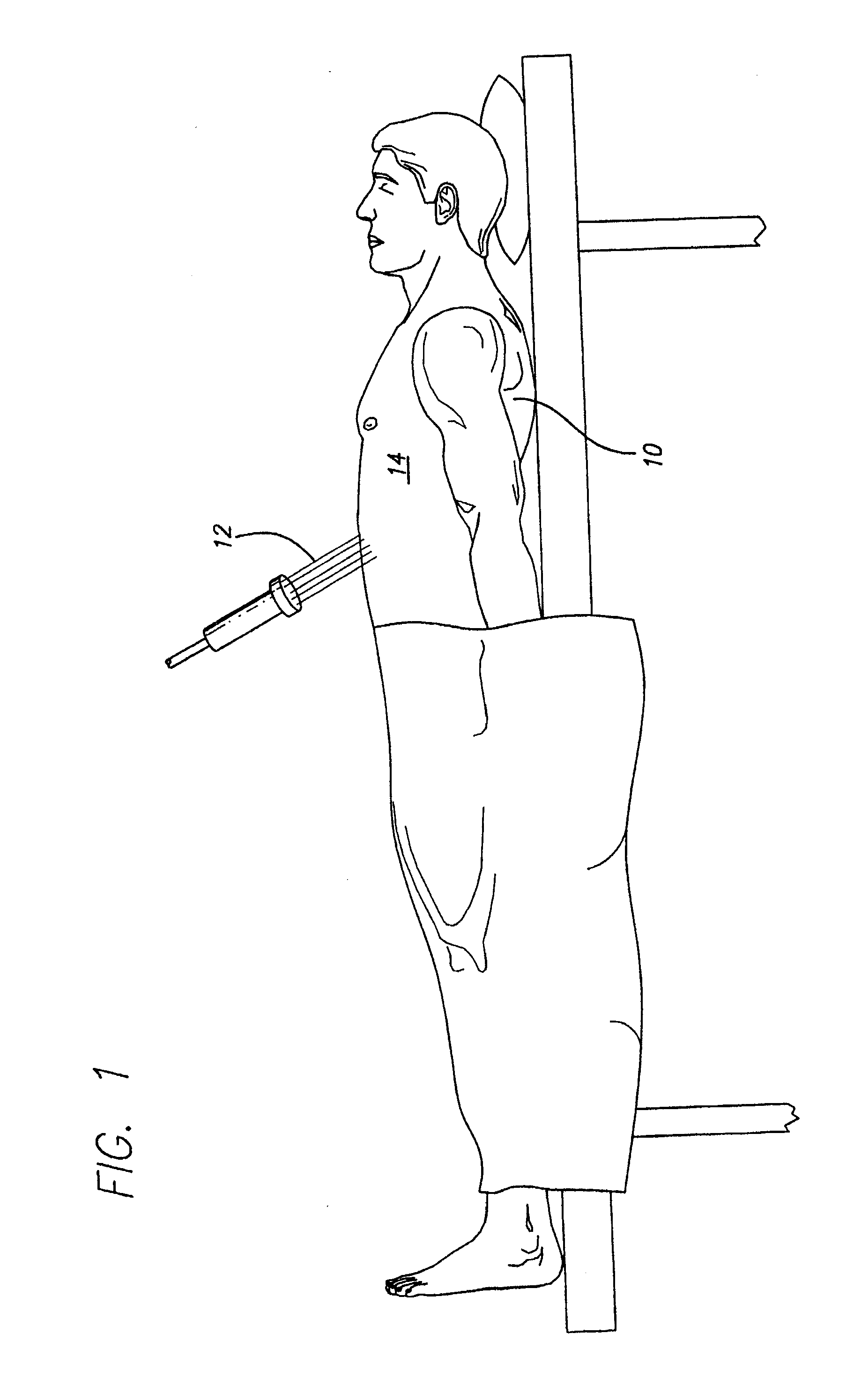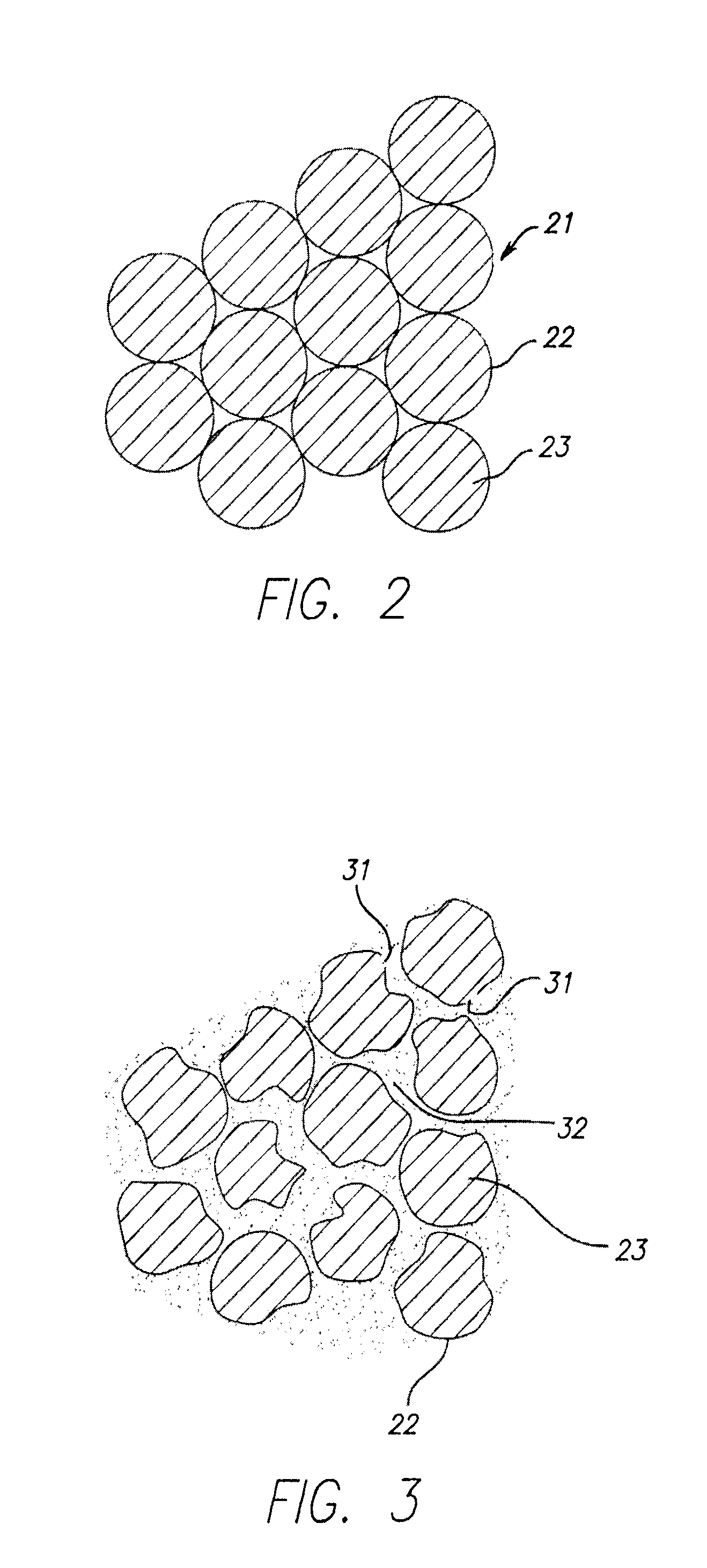Method for Treatment of Diabetes and Prediabetes with Low-Level Laser Therapy
a laser therapy and diabetes technology, applied in the field of diabetes or prediabetes treatment, can solve the problems of complex cellular mechanisms that contribute to the modulation of muscle and adipose cell sensitivity to insulin, no treatment is able to reverse, and no treatment is able to achieve the effect of reducing intracellular fat and tnf- levels
- Summary
- Abstract
- Description
- Claims
- Application Information
AI Technical Summary
Benefits of technology
Problems solved by technology
Method used
Image
Examples
example 1
[0077]A patient is diagnosed with diabetes after two fasting plasma glucose measurements at or above 7.0 mmol / L. The targeted area for apply laser energy is the patient's abdomen and hips. The patient's abdomen and each of the patient's hips are treated with laser energy using a 635 nm semiconductor diode laser with maximum power of 20 mW. The laser energy is applied for 20 minutes in a back-and-forth sweeping motion across the first hip without touching the patient, and the laser energy is applied for 20 minutes in a back-an-forth sweeping motion across the second hip without touching the patient. Then the laser energy is applied for 20 minutes in a back-and-forth sweeping motion across the abdomen without touching the patient. The laser energy is applied so that there is no temperature rise or macroscopically visible change in the targeted areas. Treatment is repeated for the abdomen and each hip at a rate of three treatment sessions of each week over a total of 90 days The patien...
example 2
[0078]A patient is diagnosed with prediabetes after two fasting plasma glucose measurements between 5.6 mmol / L and 6.9 mmol / L. The targeted area for apply laser energy is the patient's abdomen. The patient's abdomen is treated with laser energy using a 635 nm semiconductor diode laser with maximum power of 20 mW. The laser energy is applied for 30 minutes in a back-and-forth sweeping motion across the abdomen without touching the patient. The laser energy is applied so that there is no temperature rise or macroscopically visible change in the targeted area. Treatment is repeated daily for the abdomen daily over a two week period. The patient's fasting plasma glucose is again measured, and a moderate decline in fasting plasma glucose levels is observed. The protocol is repeated without any changes for another two weeks. The patient's fasting plasma glucose is again measured, and significant improvement is observed. The diagnoses of prediabetes is removed.
example 3
[0079]A patient is diagnosed with diabetes after two fasting plasma glucose measurements at or above 7.0 mmol / L. The targeted area for applying laser energy is the patient's abdomen. The patient's abdomen is treated with laser energy using a 635 nm semiconductor diode laser with maximum power of 20 mW. The laser energy is applied for 30 minutes in a back-and-forth sweeping motion across the abdomen without touching the patient. The laser energy is applied so that there is no temperature rise or macroscopically visible change in the targeted areas. Treatment is repeated for the abdomen daily over a two week period. The patient's fasting plasma glucose is again measured, and a rapid decline in fasting plasma glucose levels is observed. The protocol is repeated for another two weeks with decreases to laser application time and frequency. The laser energy is applied for 20 minutes in a back-and-forth sweeping motion across the abdomen without touching the patient. The laser energy is ap...
PUM
 Login to View More
Login to View More Abstract
Description
Claims
Application Information
 Login to View More
Login to View More - R&D
- Intellectual Property
- Life Sciences
- Materials
- Tech Scout
- Unparalleled Data Quality
- Higher Quality Content
- 60% Fewer Hallucinations
Browse by: Latest US Patents, China's latest patents, Technical Efficacy Thesaurus, Application Domain, Technology Topic, Popular Technical Reports.
© 2025 PatSnap. All rights reserved.Legal|Privacy policy|Modern Slavery Act Transparency Statement|Sitemap|About US| Contact US: help@patsnap.com



